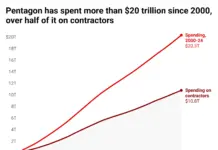
By Guest Writer Ryan Pell,
Nonprofits often engage the wide public through fundraising events to encourage donations. And, as the statistics show, people love contributing to a good cause:
- the average American supports 4.5 charities
- 69% of Americans actively participate in charities
- 60% of millennials donate on average $481 to nonprofits each year
- three out of four young adults participate in events to raise money on behalf of a nonprofit
Since the holiday season is arriving very soon, with Thanksgiving and Christmas being the most active holidays, when it comes to charity and giving donations, many nonprofits actively use this time to organize fundraising events.
But how can you make sure that you use this time to the fullest and organize an event that will not just attract the attention of the crowd to an important cause, but will also increase investments?
Let’s take a look.
1. Bring Together a Team of Helpers
An important prerequisite to the success of your fundraising event is bringing together a team of people who will be responsible for the pre- and post-event action plan, aimed at increasing investments.
Nonprofits usually create committees, responsible for a fundraising event, who take into account all the aspects that influence the fundraising success of the event, including the choice of the venue, event promotion, sponsorship, etc.
Accordingly, an event committee has several subcommittees, which include:
- Sponsorships subcommittee: also a fundraising subcommittee, it is mostly responsible for raising funds effectively. Thus, their main tasks are:
– sharing the story and the purpose of your fundraising event
– targeting sponsorships and event partners
– taking measures to encourage donations
- Logistics subcommittee: this small team is largely responsible for how your event will run. They
– negotiate with vendors
– prepare and manage schedules and timelines
– hire and coordinate the volunteers
– set up the venue
- Marketing and finance subcommittee: this team is responsible for making your event as big as possible and that your event will raise a substantial amount of money to support your cause. Their tasks include:
-promoting your event, both on social media and with the help from local media
– developing marketing materials and managing public relations
– managing the budget of your fundraising event
– submitting tax information and other financial paperwork to secure the legality of the raised funds.
You can engage 1-3 people to be responsible for each subcommittee. These people will make sure that your fundraising event is organized to its full potential and that every little detail contributes to the event’s fundraising success.
2. Think Outside the Box
Another important aspect is how your event is shaped. A fundraising event should be organized according to the cause that your nonprofit is supporting, but you need to take it one step further if you want to increase investments.
There’s no limit to the number of ideas when it comes to the themes of a fundraising event. When working on the theme of your event, you need to target a certain emotion that all the participants of the event will share. This emotion should also be the driving force to give donations.
For instance, MENCAP chose the theme offriendly competition, driving the people’s competitive spirit to contribute to a good cause. For their fundraising event in Norfolk a few years ago, they engaged the participants into a four-pond burger eating competition:

Image credit: Eastern Daily Press
Participants were only charged for entrance tickets, £10 for a two-pound burger competition, and £15 for a four-pound burger competition. The atmosphere of the event got so competitive that the nonprofit was able to raise several thousand pounds for the cause they support.
Challenging the participants to do something to support the cause is a great strategy to both engage more people and increase investments. With their event, MENCAP also engaged local entrepreneurs, who became regular donors.
3. Sell Merchandise
Lastly, it’s always a good idea to give people something back for their active participation in your fundraising event. A thing that they can buy at your event will remind them of a good thing that they did and will help increase investments to support your cause.
Offering something in return helps nonprofits raise 2X more funds. In a study involving nonprofits, performed by market researchers from Flatfy, has shown that people donate more regularly to nonprofits that offer merchandise in return.
A fundraising event is a good reason to boost the sales of your merch and increase investments. 4Ocean, an international nonprofit organization that cleans oceans from plastic, often sell special merchandise during their fundraising events, for instance, their partnership bracelets:

Image credit: 4Ocean
The money from purchasing each bracelet contributes to the removal of one pound of trash, so the more bracelets 4Ocean sells, the more trash they can clean from the ocean and coastlines.
Offering merchandise at your events gives the donors a good reason to support your cause even more. They know that the money will go directly to the cause, prompting them to give more.
Wrapping Up
Using fundraising events to increase investments is a great idea to attract attention to the cause you support. However, to make the fundraising event fulfill its potential, a lot of prior planning should be done.
Engage the team of active helpers, who will plan and execute your event, challenge the participants to actively support your cause, and offer something in return. This is the formula of a successful fundraising event that boosts investments and attracts attention.
Ryan is a passionate writer who likes sharing his thoughts and experience with the readers. Currently, he works as a digital marketing specialist; you can check his website https://hu.flatfy.com. He likes everything related to traveling and new countries.
Disclaimer: We at Prepare for Change (PFC) bring you information that is not offered by the mainstream news, and therefore may seem controversial. The opinions, views, statements, and/or information we present are not necessarily promoted, endorsed, espoused, or agreed to by Prepare for Change, its leadership Council, members, those who work with PFC, or those who read its content. However, they are hopefully provocative. Please use discernment! Use logical thinking, your own intuition and your own connection with Source, Spirit and Natural Laws to help you determine what is true and what is not. By sharing information and seeding dialogue, it is our goal to raise consciousness and awareness of higher truths to free us from enslavement of the matrix in this material realm.
 EN
EN FR
FR

























